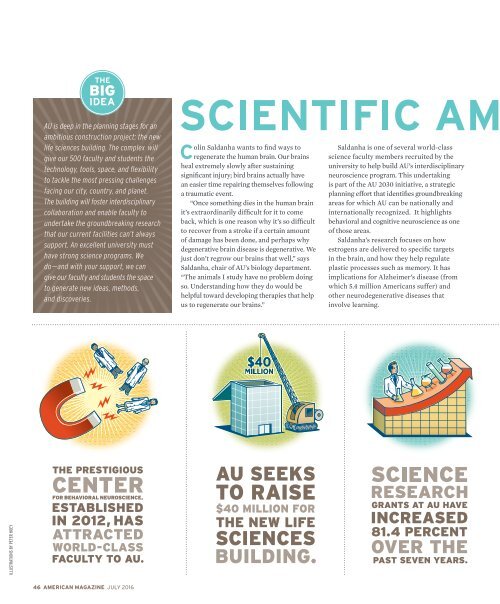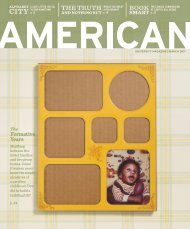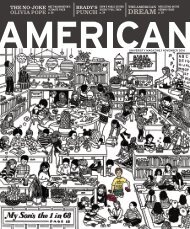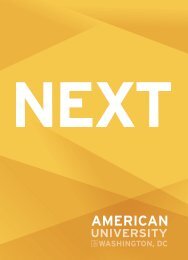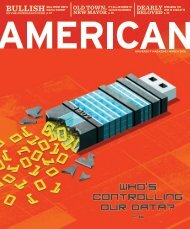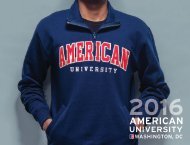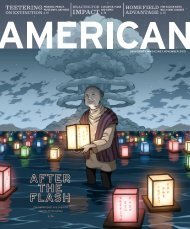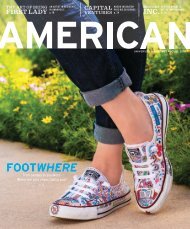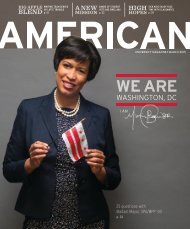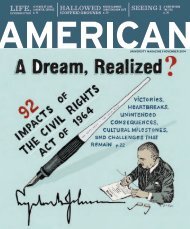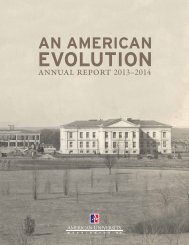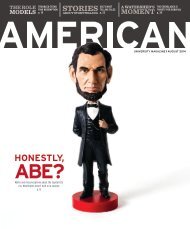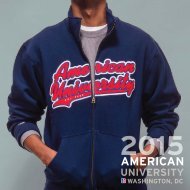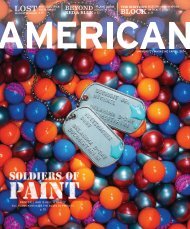American magazine, July 2016
In this issue explore DC street art, run away with the Street Light Circus, meet AU’s Olympic hopefuls, reminisce about commencements past, hop on the Metro to the Smithsonian, and get to know some of AU’s 1,875 Boston transplants. Also in the July issue: 3 minutes on the national parks, 88 years of yearbooks, and a beer quiz.
In this issue explore DC street art, run away with the Street Light Circus, meet AU’s Olympic hopefuls, reminisce about commencements past, hop on the Metro to the Smithsonian, and get to know some of AU’s 1,875 Boston transplants. Also in the July issue: 3 minutes on the national parks, 88 years of yearbooks, and a beer quiz.
You also want an ePaper? Increase the reach of your titles
YUMPU automatically turns print PDFs into web optimized ePapers that Google loves.
AU is deep in the planning stages for an<br />
ambitious construction project: the new<br />
life sciences building. The complex will<br />
give our 500 faculty and students the<br />
technology, tools, space, and flexibility<br />
to tackle the most pressing challenges<br />
facing our city, country, and planet.<br />
The building will foster interdisciplinary<br />
collaboration and enable faculty to<br />
undertake the groundbreaking research<br />
that our current facilities can’t always<br />
support. An excellent university must<br />
have strong science programs. We<br />
do—and with your support, we can<br />
give our faculty and students the space<br />
to generate new ideas, methods,<br />
and discoveries.<br />
Colin Saldanha wants to find ways to<br />
regenerate the human brain. Our brains<br />
heal extremely slowly after sustaining<br />
significant injury; bird brains actually have<br />
an easier time repairing themselves following<br />
a traumatic event.<br />
“Once something dies in the human brain<br />
it’s extraordinarily difficult for it to come<br />
back, which is one reason why it’s so difficult<br />
to recover from a stroke if a certain amount<br />
of damage has been done, and perhaps why<br />
degenerative brain disease is degenerative. We<br />
just don’t regrow our brains that well,” says<br />
Saldanha, chair of AU’s biology department.<br />
“The animals I study have no problem doing<br />
so. Understanding how they do would be<br />
helpful toward developing therapies that help<br />
us to regenerate our brains.”<br />
Saldanha is one of several world-class<br />
science faculty members recruited by the<br />
university to help build AU’s interdisciplinary<br />
neuroscience program. This undertaking<br />
is part of the AU 2030 initiative, a strategic<br />
planning effort that identifies groundbreaking<br />
areas for which AU can be nationally and<br />
internationally recognized. It highlights<br />
behavioral and cognitive neuroscience as one<br />
of those areas.<br />
Saldanha’s research focuses on how<br />
estrogens are delivered to specific targets<br />
in the brain, and how they help regulate<br />
plastic processes such as memory. It has<br />
implications for Alzheimer’s disease (from<br />
which 5.4 million <strong>American</strong>s suffer) and<br />
other neurodegenerative diseases that<br />
involve learning.<br />
ILLUSTRATIONS BY PETER HOEY<br />
46 AMERICAN MAGAZINE JULY <strong>2016</strong>


